Celebrating LGBTQ+ Art and Culture: A Tapestry of Diversity and Expression
By Las Vegas PRIDE Magazine Staff
Art, in all its forms, has always been a reflection of the human experience, capturing the essence of society, its struggles, its triumphs, and its dreams. The LGBTQ+ community, with its rich history and vibrant presence, has made significant contributions to the arts, weaving its unique perspectives into the broader cultural tapestry. This article explores the impact of LGBTQ+ artists, musicians, and performers who have not only created groundbreaking works but have also become powerful voices for equality and inclusion.

The Visual Artists: Painting and Photography
The world of visual arts has long been a space for LGBTQ+ artists to express their identities and challenge societal norms. Keith Haring, one of the most iconic artists of the late 20th century, used his bold lines and vivid colors to create artworks that spoke to the vibrancy of the LGBTQ+ community while advocating for social change. Haring’s public murals and subway drawings brought awareness to issues like AIDS and civil rights, making him a beloved figure in both the art world and the LGBTQ+ community.
Another influential artist, David Hockney, has been a pioneering force in contemporary art for decades. Known for his innovative techniques and explorations of perspective, Hockney’s works often depict scenes of LGBTQ+ life with a sense of intimacy and warmth. His pieces challenge conventional narratives and celebrate the beauty of queer relationships and experiences.
The Musicians: Breaking Barriers with Sound
In the realm of music, LGBTQ+ artists have left an indelible mark, breaking barriers and reshaping genres. Freddie Mercury, the legendary frontman of Queen, remains a timeless symbol of artistic prowess and flamboyant performance. His powerful voice and dynamic stage presence redefined rock music, inspiring countless musicians to embrace their true selves.
Another musical trailblazer, Janelle Monáe, has garnered acclaim for her genre-defying music and unapologetic embrace of her identity. Her albums are a blend of funk, soul, pop, and hip-hop, infused with themes of freedom, rebellion, and queer pride. Monáe’s art and activism go hand in hand, making her a key figure in the ongoing fight for LGBTQ+ rights and representation.

The Performers: Theatre and Drag
In the world of theatre, LGBTQ+ performers have been instrumental in shaping the stage into a more inclusive space. Harvey Fierstein, a Tony Award-winning playwright and actor, is known for his groundbreaking work in “Torch Song Trilogy,” which explores themes of identity, love, and family within the LGBTQ+ community. Fierstein’s contributions have paved the way for other queer playwrights and actors to share their stories.
Drag has become a cultural phenomenon, and RuPaul, the queen of drag, has played a significant role in bringing this art form to the mainstream. As the host of “RuPaul’s Drag Race,” RuPaul has created a platform that celebrates diversity, creativity, and self-expression. The show has become a global sensation, empowering drag artists worldwide and fostering a greater understanding of LGBTQ+ culture.
A Celebration of Diversity and Expression
The contributions of LGBTQ+ artists, musicians, and performers are a testament to the power of art in transcending boundaries and promoting inclusivity. Through their creativity, these individuals have challenged stereotypes, championed equality, and inspired others to embrace their authentic selves. As society continues to evolve, the influence of LGBTQ+ art and culture will undoubtedly remain a source of inspiration and a beacon of hope for generations to come.
